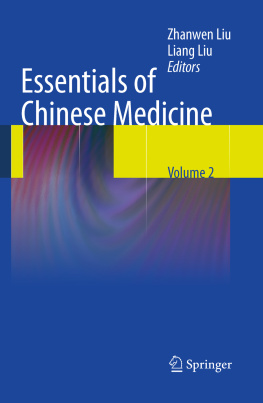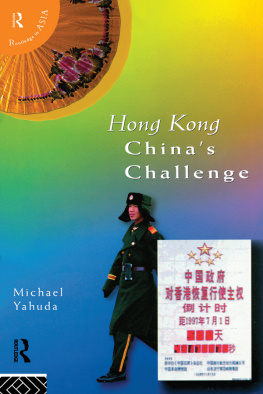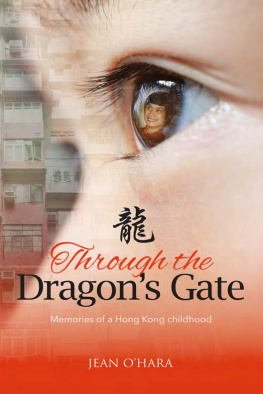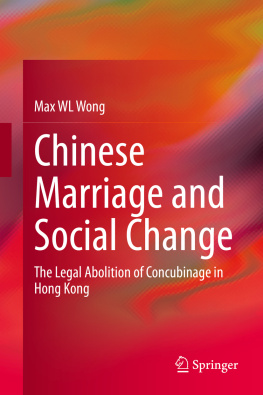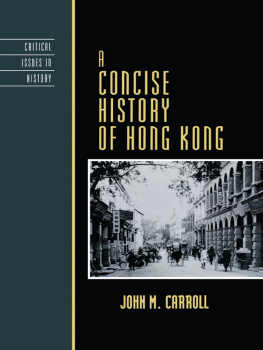1.I.1 Basic Concepts
The theory of the meridians ( jingluo ) concerns the system of vessels that sustains the entire human body, providing the means of linking all parts of the body. Meridians is the general term, encompassing both jing and luo . The jing are the main meridians (or simply, meridians), which are the pathways linking the upper and lower body, the viscera (interior) and the skin, sinews, bones and other tissues (exterior). The luo are the smaller collateral branches of the main meridians; they subdivide into smaller and smaller branches, and these in turn form a network of vessels that reaches every part of the body.
In the interior the meridians are intimately related to the visceral organs. In the exterior they are intimately related to the limbs and joints. Being the conduits between the interior and the exterior of the body they integrate all the organs and tissues into an organic whole. The meridian system provides the pathways for the movement of Qi and blood, for the regulation of YinYang, and for the various organs to influence one another under both physiologic and pathologic conditions. The application of acupuncture and moxibustion also relies upon the meridian system.
The theory of the meridians is an important component of the CM theoretical system.
1.I.2 Functions of Meridians
The meridian system is central to human physiology and pathology and its theory is indispensable in CM diagnostics, therapeutics and the prevention of disease and health presentation.
1.I.2.i Physiology
The meridians, main and collateral, form a pervasive network that integrates every part of the human body into an organic whole. They provide the infrastructure that makes possible the circulation of Qi and blood, the actions of YinYang, the nourishment of the organs and tissues and the defense of the body against exogenous disease evils. They are essential for the integration of the many parts of the body and the harmonization of visceral functions and other vital activities.
The Spiritual Pivot states: Human Qi, blood, essence and spirit are what enable life. The meridians are what enable the movement of Qi and blood, the efficacy of YinYang, the nourishment of the sinews and bones and the facilitation of the joints.
CM also uses the phrase meridian Qi to refer to the physiological capacity of the meridians.
1.I.2.ii Pathology
The meridians have an intimate relationship with the onset and development of disease. If meridian-Qi is disturbed, the ability of the meridians to transport Qi and blood is impaired. Then YinYang cannot be regulated and the vital activities of the body cannot be protected. When that happens, exogenous disease evil can succeed in attacking the body and cause illness. After gaining access the disease evils can further follow the pathways of the meridians and transmit from the exterior to the interior or from the interior to the exterior. Conversely, illnesses that arise in the visceral organs can also follow the pathways of the meridians to extend into the exterior and the limbs.
1.I.2.iii Diagnostics
In general, whenever an illness displays changes in any part of the exterior of the body it is possible, by exploiting the knowledge of the pathways of the meridians, to ascertain which visceral organs are diseased and by which meridians the abnormalities are transmitted. For example, flank and inguinal pain mostly reflect disorder of the liver and the liver meridian since the liver meridian winds around the genital organs and distributes to the flanks and ribs.
1.I.2.iv Treatment
In clinical practice the theory of the meridians is widely used to guide the treatment of every type of disease. The meridians are the thoroughfare by which medicines express their actions and instrumental stimulations elicit their responses.
Treatment by acupuncture and moxibustion aims to provide stimulation at designated acupoints along the meridians in order to restore the functions of the meridians and regulate the actions of YinYang, Qi and blood of the body's visceral organs, thereby to achieve the therapeutic goal.
By the same token, in pharmacotherapy the active principles of the herbs are carried to the diseased organs or tissues by means of the meridians. Based on the accumulated observations over many centuries the ancient CM physicians founded the theory of meridian-affinity of herbs, according to which each herb has a special affinity for a certain meridian and visceral organ.
1.I.2.v Prevention of Disease and Health Preservation
In clinical practice the regulation of the meridians is also used to prevent disease. For example, the acupoint Zusanli (ST-36) is an important health-promoting point. Moxibustion at the acupoints Zusanli (ST-36), Zhongwan (CV-12) and Guangyuan (CV-4) has health-promoting and general tonic effects. Moxibustion at the acupoint Dazhui (GV-14) can prevent the common cold. Moxibustion at the acupoints Zusanli (ST-36) and Xuanzhong (GB-39) can prevent stroke.

